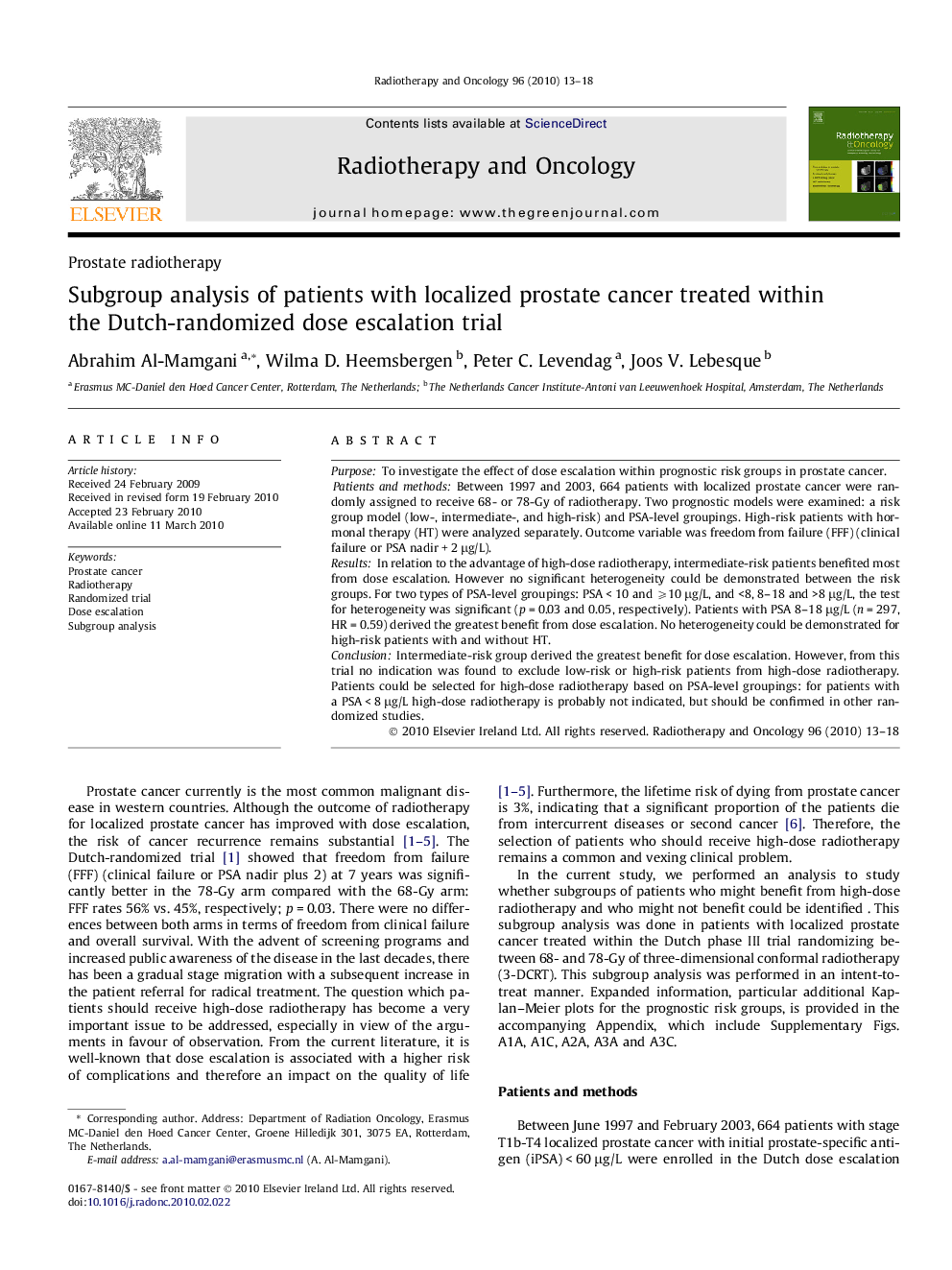| Article ID | Journal | Published Year | Pages | File Type |
|---|---|---|---|---|
| 2158966 | Radiotherapy and Oncology | 2010 | 6 Pages |
PurposeTo investigate the effect of dose escalation within prognostic risk groups in prostate cancer.Patients and methodsBetween 1997 and 2003, 664 patients with localized prostate cancer were randomly assigned to receive 68- or 78-Gy of radiotherapy. Two prognostic models were examined: a risk group model (low-, intermediate-, and high-risk) and PSA-level groupings. High-risk patients with hormonal therapy (HT) were analyzed separately. Outcome variable was freedom from failure (FFF) (clinical failure or PSA nadir + 2 μg/L).ResultsIn relation to the advantage of high-dose radiotherapy, intermediate-risk patients benefited most from dose escalation. However no significant heterogeneity could be demonstrated between the risk groups. For two types of PSA-level groupings: PSA < 10 and ⩾10 μg/L, and <8, 8–18 and >8 μg/L, the test for heterogeneity was significant (p = 0.03 and 0.05, respectively). Patients with PSA 8–18 μg/L (n = 297, HR = 0.59) derived the greatest benefit from dose escalation. No heterogeneity could be demonstrated for high-risk patients with and without HT.ConclusionIntermediate-risk group derived the greatest benefit for dose escalation. However, from this trial no indication was found to exclude low-risk or high-risk patients from high-dose radiotherapy. Patients could be selected for high-dose radiotherapy based on PSA-level groupings: for patients with a PSA < 8 μg/L high-dose radiotherapy is probably not indicated, but should be confirmed in other randomized studies.
